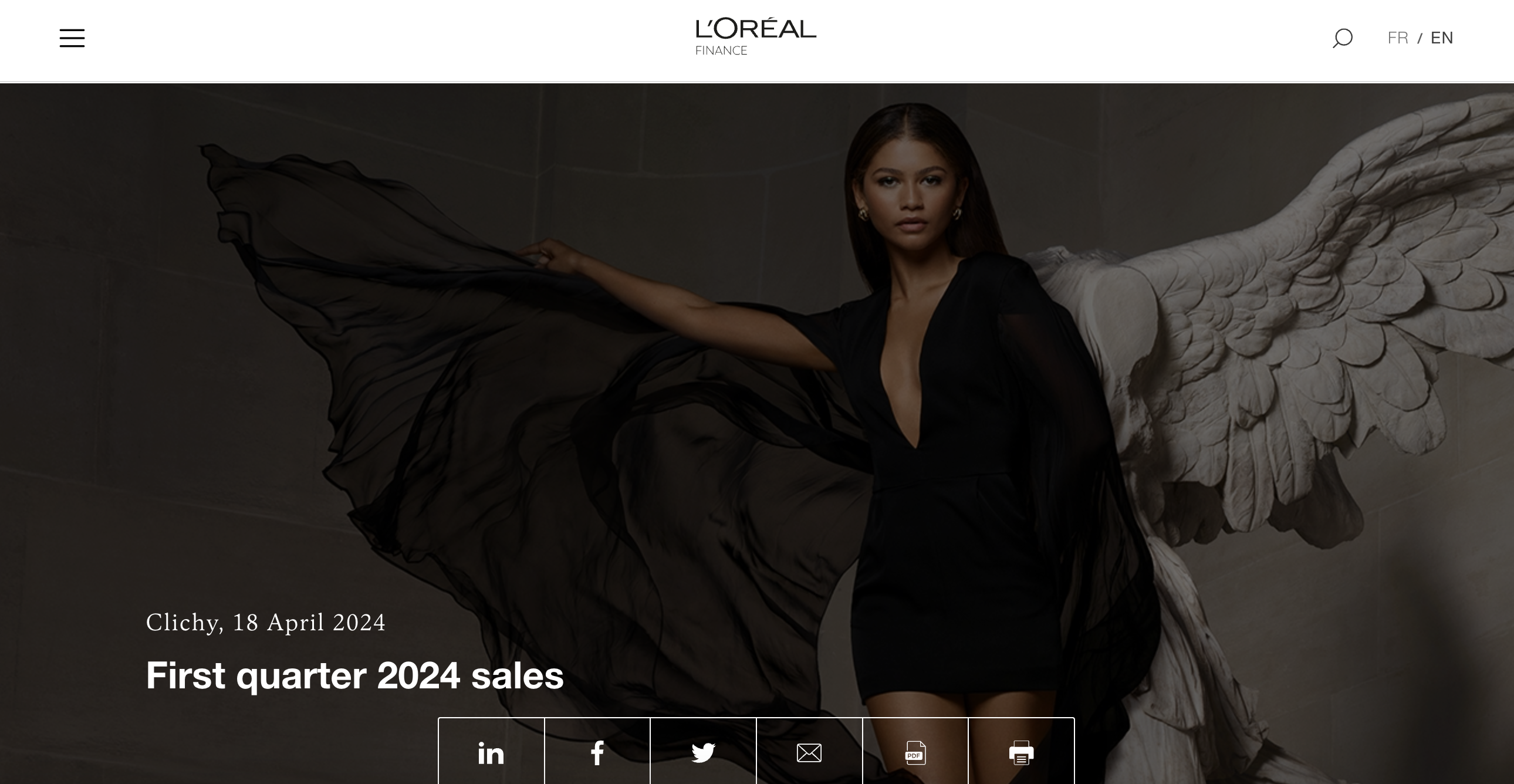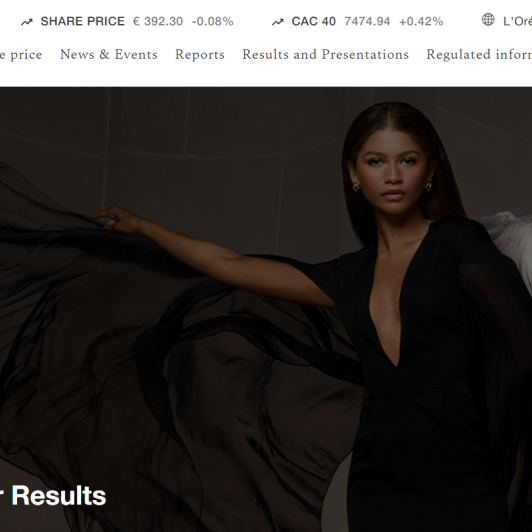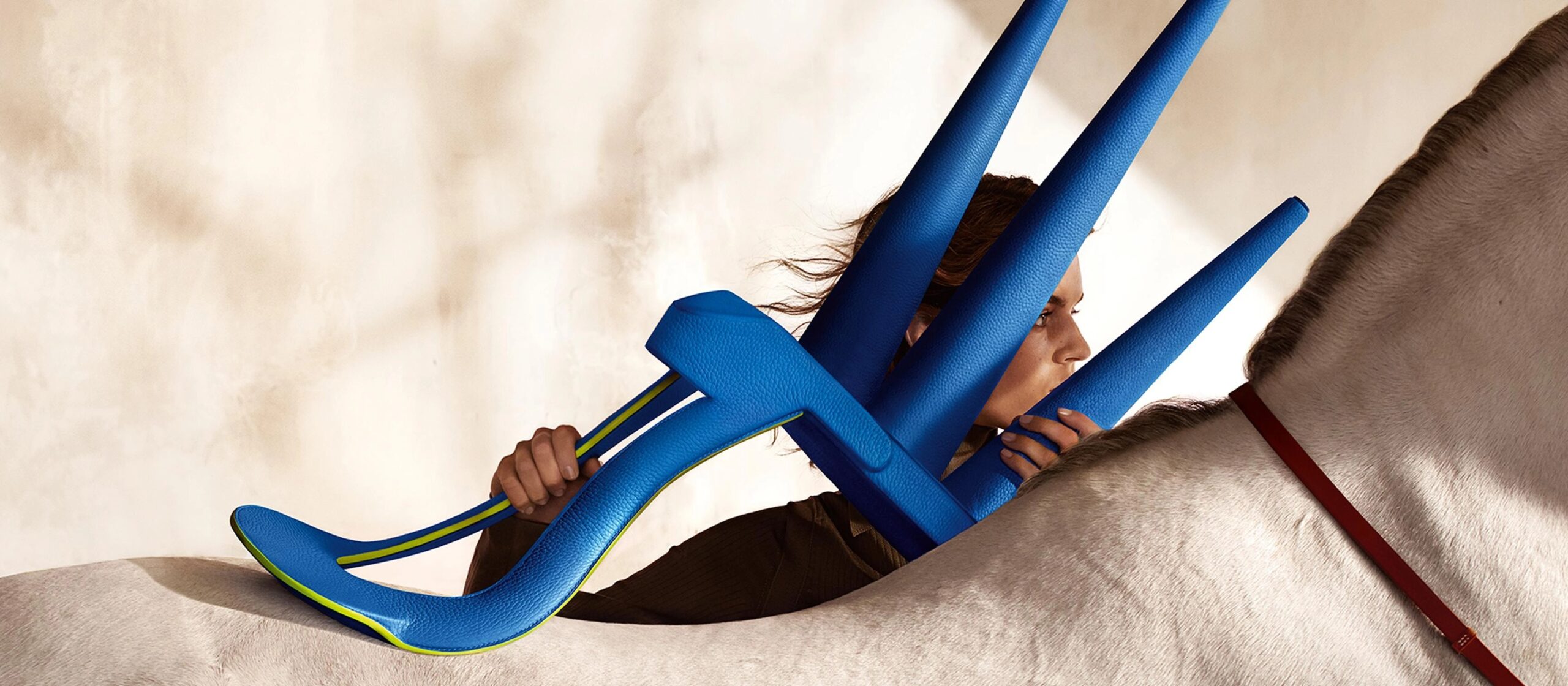On April 18, the French beauty giant L’Oréal released its financial results for the first quarter of the fiscal year 2024, ending March 31. The group continues to perform well in the consistently active global beauty market, with sales increasing by 8.3% to 11.24 billion euros, an 11.8% rise at constant exchange rates, and a 9.4% increase on a comparable basis (based on a comparable brand portfolio and fixed exchange rates). All of the group’s divisions experienced growth, with the Consumer Products and Dermatological Beauty divisions showing excellent performance.
The group’s growth was particularly notable in Europe and emerging markets. In the Chinese Mainland market, L’Oréal’s Luxury Products division continued to outperform the broader market, with strong momentum, especially in high-end skincare (notably Helena Rubinstein) and licensed luxury brands like Yves Saint Laurent, Maison Margiela, Prada, and Valentino.

L’Oréal Group CEO Nicolas Hieronimus commented on the performance, stating, “2024 is off to a very good start with like-for-like growth of +9.4%, perfectly illustrating the power of our unique model. We are a pure player in beauty, a category that has once again proven its relentless growth capacity. Our multipolar approach to beauty – from luxury to mass, professional to dermatological, in all channels, all price points, and all geographies – allows us to seize all growth opportunities and offset temporary points of softness.“
He noted that the first quarter’s results are a perfect proof of this model, “Continued double-digit growth in Europe, coupled with ongoing strength in emerging markets more than offset the only gradual recovery in North Asia. The outstanding performances of dermatology and mass compensated the short-term challenges in luxury. All in all, adjusted for the favorable phasing in North America, our like-for-like growth was a strong +8.1%, not only maintaining our rhythm, but once again significantly outperforming the dynamic beauty market.
This remarkable performance also reflected the strength of our innovation, the power of our brands, as well as the engagement of our teams around the world.”
Hieronimus concluded, “In an environment that continues to be marked by economic and geopolitical tensions, we are optimistic about the outlook for the beauty market, and confident in our ability to keep outperforming it and to achieve another year of growth in sales and profit.”
Additionally, key events during the reporting period for L’Oréal Group included:
- Following a successful collaboration with the Prada brand, in February, L’Oréal Group and Prada Group announced a global long-term licensing agreement, with L’Oréal Group developing and distributing luxury beauty products for Prada’s Miu Miu brand. The beauty business for the Miu Miu brand, now overseen by L’Oréal’s Luxury Products division, is expected to launch its first perfume product in 2025.
- In March, L’Oréal was recognized by the global environmental non-profit organization CDP as a Supplier Engagement Leader. The group stated that this acknowledges the commitment to addressing climate change among more than 450 companies in its supply chain. This year also marked the sixth consecutive year L’Oréal has been recognized by CDP for its sustainable development commitments throughout its supply chain.
- In February, according to the Equileap 2024 Gender Equality Report and Ranking, L’Oréal ranked among the top 10 global companies for gender equality, placing first in France. The report assessed 3,795 publicly listed companies across 27 markets.
As of now, L’Oréal Group owns a portfolio of 37 international brands and employs over 90,000 people. Its distribution network is comprehensive, encompassing e-commerce, mass market retailers, department stores, pharmacies, perfumeries, hair salons, brand-specific and travel retail outlets. The company operates 20 research centers across 11 countries worldwide and has a professional research and innovation team consisting of more than 4,000 scientists and 6,400 digital talents.
As of the close of April 18, L’Oréal Group’s stock price increased by 1.28% to 423.6 euros per share compared to the previous day, with a cumulative rise of 0.31% over the past 12 months, bringing the latest market value to 226.51 billion euros.
By Division:

— Professional Products Division
In the first quarter, this division excelled in markets such as North America, the UK, the Chinese Mainland, Brazil, and the Gulf Cooperation Council (GCC) countries, including the United Arab Emirates, Oman, Bahrain, Qatar, Kuwait, and Saudi Arabia.
In terms of categories, due to strong consumer demand for premium products, hair care remained highly active, benefiting from strong launches such as Kérastase‘s Première and Redken‘s Acidic Color Gloss, as well as the continued success of L’Oréal Professionnel’s Absolute Repair Molecular and Metal Detox products. In the hair coloring segment, Redken’s popular Shades EQ and the relaunched Diacolor by L’Oréal Professionnel drove growth.
Moreover, the division continued its omni-channel strategy: further developing in the salon sector, accelerating in e-commerce, and deploying its brands in selected channels. Simultaneously, Kérastase’s latest beauty technology, K-Scan, powered by AI to scan and diagnose hair and scalp conditions, provided new services to hairstylists.
— Consumer Products Division
All four major brands in this division achieved double-digit growth, further advancing the division’s strategies of democratisation and premiumisation.
Market-wise, a strong start in Europe and ongoing prosperity in emerging markets (particularly Mexico, Brazil, and Indonesia) contributed to performance across all regions.
Moreover, each category saw double-digit growth. The makeup business notably grew, driven by L’ORÉAL Paris’s Panorama mascara, Maybelline New York’s Superstay Lumi Matte foundation, and NYX Professional Makeup’s Duck Plump lip color, which benefited from a Super Bowl advertisement.
Hair care was the fastest-growing category in the Consumer Products Division, with sales of the new Elvive Glycolic Gloss haircare series from L’Oréal Paris skyrocketing due to its early success. Meanwhile, skincare also accelerated significantly, driven by the strong start of L’Oréal Paris’s Bright Reveal whitening products, Garnier’s acne-fighting innovations, the strong trend of Vitamin C Daily UV fluid, and the success of the mass medical brand Mixa in Europe.
— L’Oréal Luxe
Regionally, strong growth in Europe and North America partly offset the weakness in North Asia for the Luxury Products division. In North Asia, the division’s performance was affected by an unfavorable comparison base in travel retail and slow growth in the the Chinese Mainland market. However, L’Oréal’s luxury beauty business in the Chinese Mainland continued to lead the broader market.
Category-wise, fragrances were once again the most dynamic, with outstanding performances by brands such as Yves Saint Laurent, Valentino, and Prada, continuing to outperform the broader market in the L’Oréal Luxe division. In makeup, the success of the Yves Saint Laurent series (especially the new Loveshine lip shine series), the launch of Prada makeup, and products such as Urban Decay’s Face Bond contributed to a recovery to double-digit growth. In skincare, Yves Saint Laurent and Takami stood out and continued to expand in North Asia.
— Dermatological Beauty Division (formerly Active Cosmetics Division)
The group reported that during the period, the Dermatological Beauty Division maintained strong momentum, growing at a rate 1.6 times faster than the broader market, demonstrating the success of the division’s growth strategy.
Regionally, as the division sought global expansion, its foundations became increasingly broad and balanced across both developed and emerging markets.
Brand-wise, La Roche-Posay remained the leading contributor to growth in the Dermatological Beauty Division, while CeraVe saw robust growth in both the US and international markets, greatly benefiting from its highly successful Super Bowl campaign. Vichy got off to a successful start with the support of its Dercos line, and the US high-end medical skincare brand Skinbetter Science maintained strong momentum in the US market and launched in Canada.
The division’s main strengths lay in its increasing medical leadership and unparalleled R&D backbone, regularly introducing life-changing innovations. For example, La Roche-Posay recently launched the MelaB3 series to address localized hyperpigmentation, formulated with the breakthrough, multi-patented Melasyl™ component, developed through more than 120 scientific studies over 18 years.

By Region:

— North Asia Market
The growth in the North Asia market continued to be hindered by the travel retail channel. However, in the still sluggish beauty market of the Chinese Mainland, L’Oréal’s performance significantly surpassed the broader market, with a growth of 6.2%. This success is attributed to the breadth of its products (including categories, channels, price points) and its innovative channels. Furthermore, the markets in Japan and Hong Kong benefited from the recovery of tourism, achieving double-digit growth.
By division, the Consumer Products Division, particularly fueled by strong growth in L’Oréal Paris (especially Age Perfect), drove growth in the North Asia region. Additionally, the strong acceleration of CeraVe propelled the development of the Dermatological Beauty Division, while the ongoing success of Kérastase boosted the Professional Products Division. Moreover, in the Mainland China market, L’Oréal’s Luxury Products Division continued to outperform the broader market with strong momentum in high-end skincare (notably Helena Rubinstein) and licensed luxury brands such as Yves Saint Laurent, Maison Margiela, Prada, and Valentino.
— European Market
In an active market environment, L’Oréal’s performance continued to outpace the broader market, with broad growth bases in various countries, particularly notable in Germany-Austria-Switzerland, Spain-Portugal, and the UK-Ireland.
The momentum was strongest in the skincare, fragrance, and high-end haircare categories valued by the group. By division, the Consumer Products Division achieved remarkable growth, driven by the success of L’Oréal Paris Elvive in haircare, Garnier’s vitality in skincare, and various makeup products launched by major brands. Additionally, the success of Yves Saint Laurent, Prada, and Valentino consolidated not only the overall market leadership of the Luxury Products Division’s fragrance category but also strengthened its position in both men’s and women’s fragrance segments. The Dermatological Beauty Division continued to perform excellently, significantly outpacing the market, with all brands contributing, once again proving the complementary nature of the division’s product portfolio in the most dynamic sector of beauty—skin health. The Professional Products Division’s performance benefited from the successful launches of Kérastase and L’Oréal Professionnel.
— North American Market
Amid evolving market dynamics, growth remained strong, driven by robust online channels, successful innovations, and significant contributions from all divisions.
Led by strong innovations from core brands such as Redken and Kérastase, the Professional Products Division outperformed the market in haircare. Driven by innovations from the L’Oréal Paris brand, the Consumer Products Division surpassed the market in haircare, and the makeup department saw robust growth propelled by NYX Professional Makeup’s Duck Plump lipstick. The growth of the Luxury Products Division continued to be driven by fragrances, especially Valentino’s Born in Roma and Yves Saint Laurent’s MYSLF; in makeup, Yves Saint Laurent maintained double-digit growth, with online sales also continuing to grow strongly. With the significant growth of La Roche-Posay and the ongoing strong momentum of CeraVe and Skinbetter Science, the skincare category once again outperformed the market.
— South Asia-Pacific, Middle East, North Africa, and Sub-Saharan Africa (SAPEMENA-SSA)
In this region, the growth foundation was broad across South Asia-Pacific, Middle East, and North Africa markets, with all categories and divisions experiencing robust growth, contributing through both pricing and volume. By category, led by the Consumer Products Division and the Dermatological Beauty Division, skincare was the most dynamic; followed by haircare (with balanced sales across the Consumer Products Division and the Professional Products Division) and fragrances. The best-performing division was the Consumer Products Division, where all categories achieved double-digit growth; additionally, the Dermatological Beauty Division’s sales ranked second, with CeraVe performing exceptionally well in the first quarter. By market, the main contributors to growth were the Australia-New Zealand market, GCC member countries, and the Southeast Asian market. Additionally, the online business in this region remained particularly active, especially in the Southeast Asian market.
Furthermore, the Sub-Saharan Africa market also saw significant growth, with all sub-regional markets growing at double-digit rates. All categories contributed, particularly skincare and makeup. By division, the main contributors were the Consumer Products Division and the Dermatological Beauty Division.
— Latin America
In this region, all core categories achieved double-digit growth: haircare led, followed by skincare and makeup. Additionally, led by the Consumer Products Division and the Dermatological Beauty Division, all divisions also saw growth, with the Consumer Products Division showing extraordinary momentum in all its major categories, particularly vibrant under the L’Oréal Paris brand; the strong performance of La Roche-Posay and CeraVe drove the dermatological beauty business.
By regional market, Mexico and Brazil were the top two contributors in the Latin American market, with Mexico’s growth rate exceeding 25%, making it L’Oréal Group’s sixth largest contributor to growth. By channel, online sales growth outpaced offline.
| Source: L’Oréal Group official website and financial reports
| Image Credit: L’Oréal Group official website
| Editor: Wang Jiaqi



